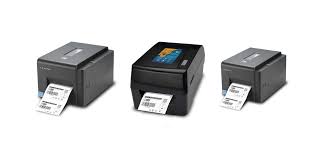A laser solution refers to the application of laser technology to solve specific problems or perform tasks in various industries such as medicine, manufacturing, telecommunications, cosmetics, and defense. These solutions involve the use of devices that generate controlled beams of light (lasers) for cutting, measuring, scanning, welding, marking, or treating materials and surfaces. Each laser solution is tailored to a particular need, making it highly precise, efficient, and often more sustainable than traditional methods.
How Laser Solutions Work
Lasers (Light Amplification by Stimulated Emission of Radiation) produce a highly focused and intense beam of light at a specific wavelength. Depending on the laser type (CO₂, fiber, diode, Nd:YAG, etc.), the beam can:
- Cut or melt materials
- Remove surface layers (ablation)
- Engrave or mark objects
- Stimulate tissue repair
- Measure distances or map objects (e.g., LIDAR)
Laser solutions are designed with a specific wavelength and power setting to match the intended application. For instance, a laser used in eye surgery will differ significantly from one used in industrial metal cutting.
Applications of Laser Solutions
1. Medical and Cosmetic Industry
Laser solutions are widely used in medical treatments such as:
- Laser surgery: For eye correction (LASIK), tumor removal, and dental procedures.
- Skin treatments: Removal of scars, tattoos, wrinkles, or pigmentation.
- Laser therapy: To reduce inflammation, stimulate tissue healing, or treat chronic pain.
Cosmetically, they offer a non-invasive way to improve appearance with minimal downtime.
2. Manufacturing and Industrial Use
In manufacturing, laser solutions are used for:
- Laser cutting and welding: For metals, plastics, and composites with extreme precision.
- Laser engraving and marking: For branding, tracking, and aesthetic detailing.
- 3D printing (laser sintering): Uses lasers to fuse powder material layer by layer.
Laser automation reduces waste, speeds up production, and enhances product quality.
3. Telecommunications and Electronics
Lasers play a critical role in:
- Fiber-optic communication: High-speed data transmission over long distances.
- PCB manufacturing: Precise drilling and etching.
- Component fabrication: Lasers help in making miniature parts for devices like smartphones and laptops.
4. Defense and Aerospace
Military-grade laser solutions are used for:
- Targeting and range finding
- Directed-energy weapons (in development)
- Detection systems such as LIDAR for drones and missiles
5. Scientific Research and Development
Lasers are essential tools in physics, chemistry, and biology labs. They’re used in spectroscopy, particle analysis, and atomic-level measurements.
Advantages of Laser Solutions
- High Precision: Ideal for intricate tasks where accuracy is crucial.
- Non-contact Process: Reduces mechanical wear and contamination.
- Automation-Friendly: Easily integrated into smart systems.
- Energy Efficient: Focused energy results in less waste.
Conclusion
Laser solutions have revolutionized how we approach challenges in multiple fields by offering accuracy, speed, and flexibility. Whether it’s treating skin issues, cutting metals, transmitting data, or guiding spacecraft, laser-based systems continue to push the boundaries of technology. As laser innovation advances, we can expect even more efficient, safe, and eco-friendly applications in everyday life and industry.








































